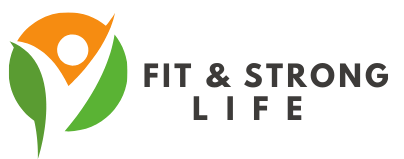Table of Contents
- Introduction
- 1. Skinfold Calipers
- 2. Bioelectrical Impedance Analysis (BIA)
- 3. Dual-Energy X-ray Absorptiometry (DEXA)
- 4. Hydrostatic Weighing
- 5. Bod Pod
- Conclusion
- FAQs
Introduction
Measuring body fat accurately is essential for understanding your overall health and fitness. Whether you’re an athlete looking to optimize performance or someone on a weight loss journey, knowing your body fat percentage can provide valuable insights. This article will discuss the top five methods for measuring body fat accurately, helping you choose the best option for your needs.
“Understanding your body composition is not just about aesthetics; it’s about health and well-being.”
1. Skinfold Calipers
Skinfold calipers are one of the most popular and cost-effective methods for measuring body fat. This technique involves pinching specific areas of your skin and measuring the thickness of the folds.
How It Works:
Typically, a trained professional will use calipers on specific sites around the body, such as the abdomen, triceps, and thighs. The measurements are then entered into an equation to estimate body fat percentage.
Pros:
- Cost-effective: Calipers are relatively inexpensive.
- Portable: Easy to use in various settings.
Cons:
- Requires skill: The accuracy depends on the skill of the person taking the measurements.
- Limited sites: Only measures subcutaneous fat, not visceral fat.
Accuracy: Skinfold measurements can be fairly accurate when done correctly, with a margin of error of about 3-5%.
For more detailed guidance, check out the American Council on Exercise.
“Make sure to work with a trained professional for the most accurate skinfold measurements.”
2. Bioelectrical Impedance Analysis (BIA)
Bioelectrical Impedance Analysis is another popular method that uses electrical currents to estimate body composition. This method works by sending a low-level electrical current through the body and measuring the resistance encountered.
How It Works:
The resistance is higher in fat tissue and lower in lean tissue, allowing for an estimation of body fat percentage.
Pros:
- Quick and easy: The process takes just a few minutes.
- Non-invasive: No need for any specialized training.
Cons:
- Hydration level affects results: Results can vary based on hydration, so consistency is key.
- Less accurate in some populations: Not as reliable for athletes or very lean individuals.
Accuracy: BIA devices can have a margin of error of about 3-7%.
For more on BIA, you can visit Healthline.
“Consistency in hydration is crucial for reliable BIA results.”
3. Dual-Energy X-ray Absorptiometry (DEXA)
DEXA is considered the gold standard for body composition analysis. This method uses low-dose X-rays to differentiate between bone mass, fat mass, and lean muscle mass.
How It Works:
You lie on a table while a scanner passes over you. The scan takes about 10-20 minutes, and the results provide a detailed breakdown of body composition.
Pros:
- Highly accurate: Provides precise measurements.
- Detailed results: Offers insights into bone density and fat distribution.
Cons:
- Costly: DEXA scans can be expensive.
- Limited availability: Not all gyms or clinics offer this service.
Accuracy: DEXA typically has a margin of error of about 1-3%.
For more information on DEXA, check out the National Institutes of Health.
“With DEXA, you’re not just measuring fat; you’re gaining insights into your overall body composition.”
4. Hydrostatic Weighing
Hydrostatic weighing, also known as underwater weighing, is a traditional method of measuring body fat. It involves being submerged in water and measuring body density.
How It Works:
You’ll be weighed in air and then again while submerged. The difference in weight is used to calculate body density, which can then be used to estimate body fat percentage.
Pros:
- Reliable: Offers accurate results when performed correctly.
- Comprehensive: Measures overall body density.
Cons:
- Inconvenient: Requires specialized equipment and can be uncomfortable.
- Not widely available: Fewer facilities offer this method.
Accuracy: The margin of error for hydrostatic weighing is around 2-3%.
For further reading, refer to WebMD.
“Hydrostatic weighing is one of the oldest methods, but still one of the most reliable when done correctly.”
5. Bod Pod
The Bod Pod uses air displacement plethysmography to measure body fat. It’s a modern alternative to hydrostatic weighing.
How It Works:
You sit in a small chamber, and the device measures the volume of air displaced by your body. This data is then used to calculate body density and fat percentage.
Pros:
- Quick and comfortable: Usually takes less than 15 minutes.
- Minimal discomfort: Unlike underwater weighing, you stay dry.
Cons:
- Costly: The technology can be expensive, limiting its availability.
- Requires special training: Operators need to be trained to ensure accurate results.
Accuracy: The Bod Pod has a margin of error of about 2-3%.
Learn more about the Bod Pod at American College of Sports Medicine.
“Bod Pods offer a modern, comfortable alternative to traditional underwater weighing.”
Conclusion
Choosing the right method for measuring body fat depends on your goals, budget, and convenience. While some methods are more accessible, others provide greater accuracy. Whichever option you choose, understanding your body fat percentage can be a crucial step towards achieving your health and fitness objectives.
“Remember, the journey to understanding your body composition is just as important as the destination.”
FAQs
1. What is a healthy body fat percentage?
A healthy body fat percentage typically ranges from 10-20% for men and 18-28% for women, but it can vary based on age and fitness level.
2. Can I measure body fat at home?
Yes, you can use methods like skinfold calipers or BIA scales at home. However, for the most accurate results, consider professional assessments.
3. How often should I measure my body fat?
It’s generally recommended to measure body fat every 4-6 weeks, as body composition changes can take time.
4. Does diet affect body fat percentage?
Absolutely! A balanced diet combined with regular exercise is key to managing body fat levels effectively.
5. Can muscle mass affect body fat readings?
Yes, increased muscle mass can lower body fat percentage readings, so consider both weight and body composition when tracking progress.
“Tracking your body fat percentage is a great way to monitor your health progress over time!”
For more in-depth insights, don’t hesitate to explore the links provided throughout the article! Also, look for more on nutrition and fitness strategies in our articles on essential nutrition tips for effective strength training and top essential supplements for optimal fitness 2024.




